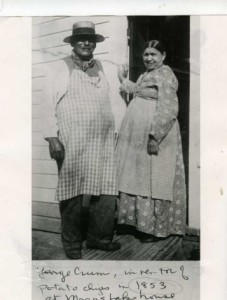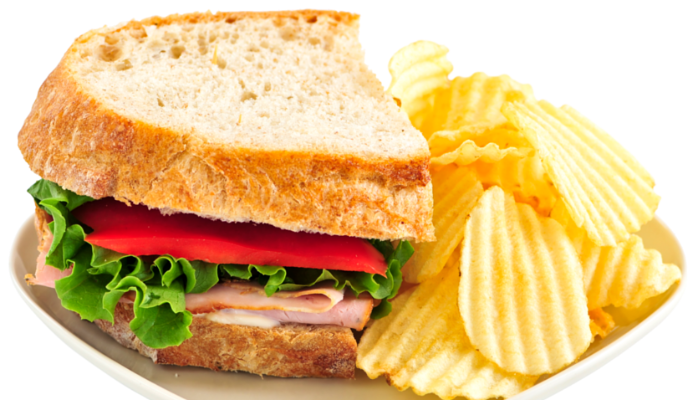Chips!! The mere thought/sight/sound of the word is enough to make you crazy hungry – let alone a photo or the sight of actual chips. The 163 year old snack food is popular all over the world.
Here are 7 lessons that content marketers can learn from the popularity of chips:
Lesson #1 – Keep your content crisp
Chips were invented on August 24, 1853 when an understandably unhappy customer sent a plate of fried potato back to the kitchen at the Moon Lake Lodge in Saratoga, New York, because they were thick and sloggy. The cook, George Crum, fried another batch that was again rejected. In retaliation, he deep fried yet another batch of wafer thin potato slices just to teach the fussy customer a lesson. He thus inadvertently invented the crisp chips that instantly became popular. Soon, Crum launched his Saratoga Chips and other companies also sprang up.
We like both chips and content crisp. Content that is long-winded or needlessly wordy is like thick and soggy fried potato. Keep your message brief, but one that is loaded with meaning and message. Tweeting is a great way to practice producing crisp content. Condense elaborate ideas into a 140 character tweet. Try to sum up the whole article into your tweet. By the time you reach your 5th tweet, you have already learnt to produce crisp content.
Lesson #2 – Keep your content snackable
Chips are snacks, not meals – something we munch on between meals, because we are taking a break and have only so much time to quickly refresh ourselves. We also eat chips when we’re bored or want a break from regular uninspiring meals. We like snacks because they are tasty.
Likewise, content should serve as tasty snacks that people look forward to when they are taking breaks between work or when they are plain tired/bored of the monotony of a regular day. Choose interesting subjects and produce snackable nuggets of captivating content that refreshes and rejuvenates people the way chips does.
Lesson #3 – Dispense your content in different packages
For nearly 75 years since their birth, chips were only available in bulk. In 1926, a California based chip company came up with the idea of pre-packaged chips that could be delivered to retailers and readily bought by customers. This further evolved into the individual and family size packages that we now have.
So also, dispense your content via convenient packages for different audience needs – some want just the gist, some want the detail. When your promote your blog posts, articles, infographics, slides or videos via social media posts, make sure to capture the key message. Your Facebook posts can be a bit longer than your tweets, since they don’t have the 140 character limit. This way, those who don’t have the time to click through your links still get the message. Yet keep the curiosity, so that those who have the time do click and read more.
Lesson #4 – Cut down on the salt and fat
It is the salt, the oil and the trans-fat that makes chips so tasty. But it is also the same salt and oil that makes them unhealthy. We add intros, summaries, connectors, anecdotes and analogies to make our content organized, fascinating and readable. We also include images to substantiate the point and draw attention. While this helps, it may also sometimes hurt, because it means more page-load time or more reading task for the audience. So optimize your images and sub down your content wherever possible. Repetition is like trans-fat in content marketing. Edit your stuff carefully to remove all instances of repetition.
Lesson #5 – Cut down on the air
You realize that air costs when you buy a bag of chips. Consumers are upset that a lot of content in the modern chips packet is actually air. Readers will be upset if your content has a lot of blah blah blah than real value.
Lesson #6 – Maintain freshness and variety
Who likes to eat stale chips from a half-used packet lying around exposed? Also how long can we continue eating the same flavor ? So get creative and come up with fresh ideas than rehash old ones. Use a variety of ideas just as we have a variety of chip flavors. Use your own imagination apart from automated idea generators.
Innovate, just as chip manufacturers have done to produce stax/pringles, tortillas, banana chips and yam chips.
Experiment, just as consumers do when they mix chips with salsa, salad, fish, cheddar and other stuff. For instance, this blog post is an experiment that compares chips with content marketing.
Lesson #7 – Follow regulations
Your chips follow FDA regulations and your content has to follow content regulations. Produce original content, cite and acknowledge any sources you have drawn from. Use quotes if your quoting others. Follow the AP guidelines where applicable.
Once you are a successful brand via your content marketing strategy, you can capitalize on your brand equity and diversify into other products just as top chip brands have done.
And now, here’s is a picture of George Crum, the angel to whom we all owe our chips!

References:




